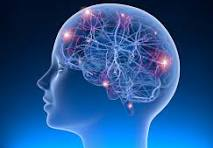Introduction to Epilepsy
- meredithchubb
- Nov 11
- 4 min read

What is Epilepsy?
Epilepsy is the fourth most common neurological disorder, characterized by a person who has recurrent seizures or someone who is at high risk for having more than one seizure. A seizure is a surge in electrical activity in the brain, and it can manifest itself in different ways occuring at any point in time.
It is important to note that not everyone who has a seizure has epilepsy. Seizures can happen as a result of a separate medical problem, such as infection, low or high blood sugar, fever, head injury, stroke, withdrawal from drugs or alcohol, or reaction to a medication. If a seizure is caused by any of these issues a person does not necessarily have epilepsy.
Types of Seizures
Neurologists use certain criteria to determine what type of epilepsy a person has based on seizure symptoms. The three main criteria they use are where the surge in electrical activity starts in the brain, person's level of awareness, and the presence of movements. Seizures are also classified into three major groups.
Generalized onset seizures - Affect both sides of the brain at the same time. During this kind of seizure a person's movement may be affected. They may have muscle jerking, muscle rigidity, may become weak or limp, or total body spasms. If movements are not affected the person may appear absent or stop all behavior.
Focal onset - Start in one area of the brain or group of cells on one side of the brain. They are further classified based on level of awareness. Focal aware means a person is awake and aware during the seizure. Focal impaired awareness means a person is confused and their awareness is affected. Focal seizures can spread to both sides of the brain becoming generalized. People with focal seizures often have an aura. An aura is a sensation that occurs directly before a seizure. These types of seizures can affect movement by causing muscle twitching or repeated automatic movements (rubbing of hands). Symptoms that do not affect movement would include changes in sensations or emotions.
Unknown onset - Beginning is not known or unwitnessed. These seizures often have complete body spasms or no movement at all.
Diagnosis
If epilepsy is suspected their doctor may refer them to a neurologist. A neurologist is a specific doctor that specializes in the brain and nervous system. A neurologist may order certain tests to determine the type of epilepsy a person has. Knowing the type of epilepsy and where the seizures originate can help when creating a treatment plan. The neurologist will obtain as many details as possible about the seizure, they will also ask about any other medical issues and medications a person may be taking. They will perform a neurological exam which may include testing the strength on both sides of their body or tracking a target with their eyes.
EEG or electroencephalogram - A specific test used to see brain activity. It is a painless test where electrodes or small metal disks are attached to a person's head and then connected with wires to a recording machine. It is very similar to an ECG (electrocardiogram) that measures or looks at the electrical activity in a person's heart. An EEG can show if there is a specific region of the brain that has abnormal electrical activity or if it is generalized on both sides of the brain. Sometimes a video of the person will be taken at the same time to see if changes in the brain correspond to abnormal movements or changes in awareness.
Brain imaging (MRI, CT scan) - Scans that looks specifically at the structures of the brain. These tests can provide more information on what may be causing the seizures thus allowing for a better treatment plan.
Treatment
The goal of any treatment plan is for a person to become seizure free. The first line of treatment is anti-epileptic medication. There are many different kinds of anti-epileptic medications. A person may need to try several to find the one that controls their seizures with the least amount of side effects. If a person is unsuccessful with anti seizure medications there are other options. Those options can include dietary therapy, devices, or surgery.
Conclusion
The long-term outlook for a person diagnosed with epilepsy is positive. Many people will become seizure free with treatment. People with epilepsy can usually lead lives similar to those without the condition. More research is still being done to enhance understanding of the disorder and create optimal treatment options for those living with epilepsy.
References:
Epilepsy Foundation. (2022). What is epilepsy? Retrieved September 29, 2025, from https://www.epilepsy.com/what-is-epilepsy
Fisher, R. S., Vickrey, B. G., Gibson, P., Hermann, B., Penovich, P., Scherer, A., & Walker, S. G. (2000). The impact of epilepsy from the patient's perspective II: Views about therapy and health care. Epilepsy Research, 41(1), 53–61. https://doi.org/10.1016/S0920‑1211(00)00128‑5
Kwan, P., & Brodie, M. J. (2001). Effectiveness of first antiepileptic drug. Epilepsia, 42(10), 1255–1260. https://doi.org/10.1046/j.1528‑1157.2001.04501.x
Epilepsy Foundation. (2025). Diagnosis. Retrieved September 29, 2025, from https://www.epilepsy.com/diagnosis
Epilepsy Foundation. (2013). Treatment. Retrieved September 29, 2025, from https://www.epilepsy.com/treatment
Assessed and Endorsed by the MedReport Medical Review Board






